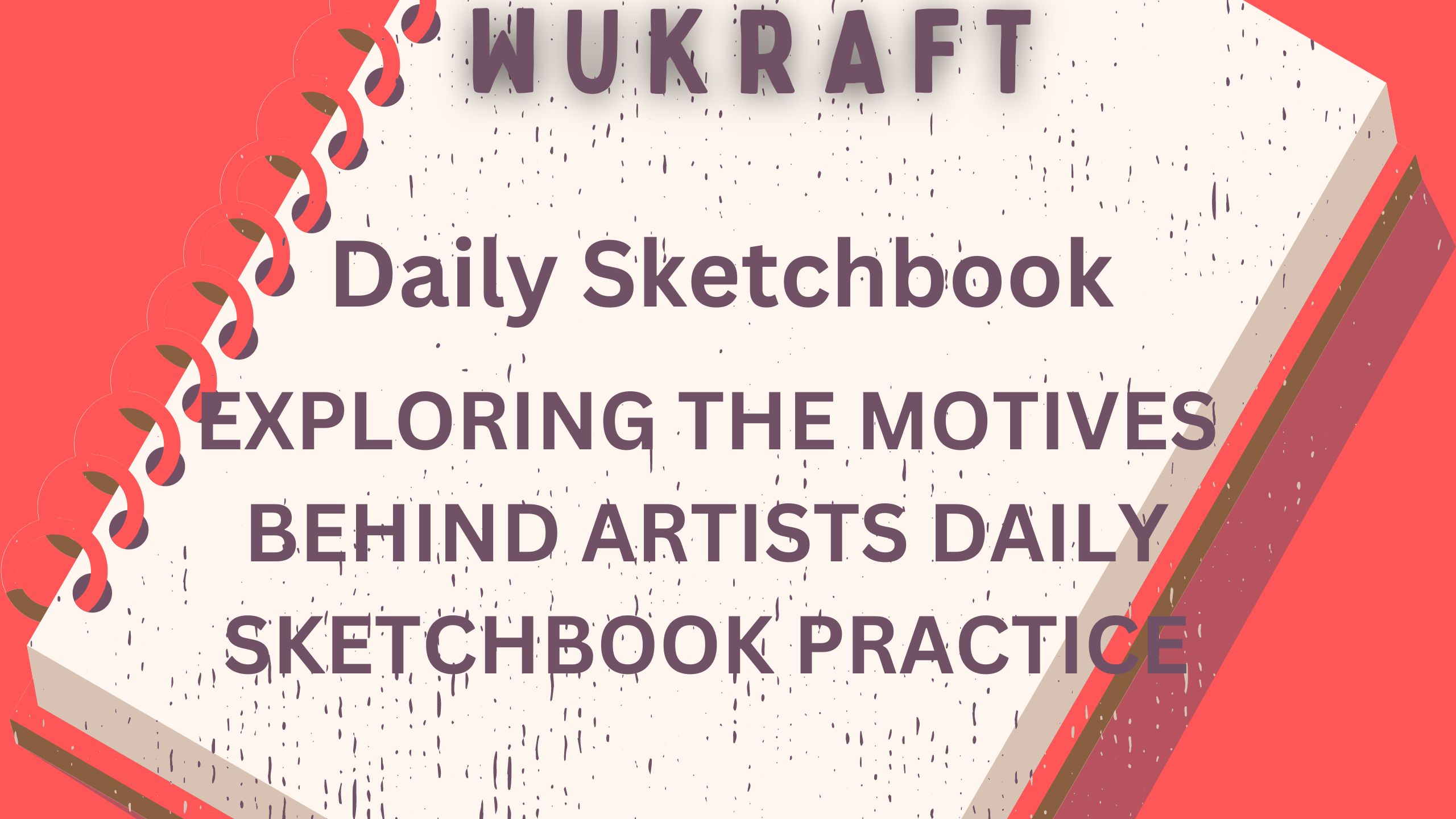If you’re an artist and haven’t yet embraced the daily sketchbook routine, it’s high time to consider incorporating it into your creative journey. It’s not an overstatement to claim that dedicating a portion of your day to sketching can significantly enhance your artistic prowess.
However, many artists encounter challenges when attempting to establish a consistent daily sketchbook practice, even if they harbor a deep love for drawing. Some of this difficulty stems from the uncertainty about what to sketch, while another part of the reluctance is linked to understanding the underlying “why” behind maintaining a sketchbook.
In essence, some artists struggle to discern why keeping a sketchbook is a common practice among their peers, which in turn, hampers their motivation.
This blog post seeks to provide guidance on both of these issues by elucidating five compelling reasons for artists to maintain their sketchbooks.
- Skill Refinement:
For those who aspire to excel as representational artists rather than in abstract forms, there are few methods as effective in skill enhancement as sketching from life within your sketchbook. This practice significantly sharpens your ability to observe details and fine-tunes your hand-eye coordination.
Furthermore, engaging in such exercises presents opportunities to bolster your problem-solving capabilities when confronted with unfamiliar subjects, such as the intricate texture of tree bark.
Additionally, sketching outdoors on a regular basis exposes you to the ever-shifting nuances of natural light throughout the day and across seasons. It’s a masterclass in understanding the transformative effects of light, from the vivid noonday sun in summer to the muted radiance of winter at the same hour. Learning to capture these variations in your sketchbook equips you to replicate them in your paintings.
Another aspect often challenging for budding artists is the transition from three-dimensional reality to a two-dimensional canvas. When you sketch directly from life, your mind, rather than a camera, translates the world from 3D to 2D. While this skill demands practice, mastering it significantly elevates the quality of your artwork. You gain a truer understanding of object colors, the dimensions of spaces, and the depth of architectural elements. Moreover, this type of drawing fosters the ability to create from your imagination if that’s your artistic goal.
- Exploring New Artistic Horizons
When it comes to maintaining a sketchbook, it’s not just about wielding pencils; it’s a space for artistic exploration. Many artists use their sketchbooks to dabble in unfamiliar painting mediums, such as watercolors, acrylics, or mixed media. 🎨
Engaging in a daily sketchbook routine empowers artists to experiment with these different materials and observe how each medium behaves. This experimentation becomes particularly intriguing when combining multiple media. For instance, if your motivation for adopting a daily sketchbook practice is to experiment with mixing acrylics and inks, you can discover how this fusion impacts color and texture.
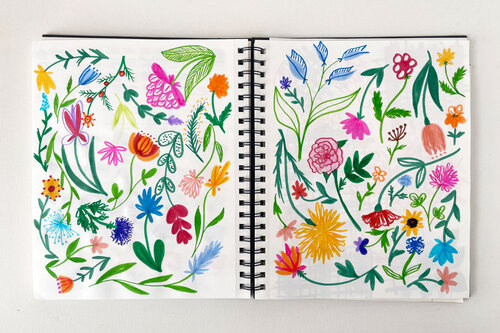
What’s fascinating about this approach is that it permits room for errors. Sketching and painting in your sketchbook offers the liberty to acquaint yourself with new materials without the constant worry of “ruining a painting” that you might experience on a canvas. It’s a low-stakes environment that encourages creativity and learning. 📔🎨
Furthermore, the journey might lead to insights about the compatibility of different paper types with various drawing or painting media. It’s possible that one of your sketchbooks performs exceptionally well with mixed media, while another is better suited for watercolor pencils or even liquid graphite. Sometimes, you won’t unveil these answers until you’ve delved into a bit of experimentation. 🗒️🖌️
🖼️ Overall, the sketchbook becomes an artistic laboratory where artists can explore uncharted territories, push boundaries, and revel in the unexpected outcomes, all while expanding their repertoire of creative techniques. 🎨🔍🧪
3. Creating a Visual Diary of Life’s Journey:
For those familiar with the Milan Art Institute blog, you’re likely aware of our profound affection for travel and the captivating world of travel sketching. In fact, our enthusiasm for creating art on the go is so fervent that it’s common to witness any one of us maintaining a separate travel sketchbook, exclusively dedicated to this purpose. 🗺️🖌️
There’s something truly extraordinary about sketching a place as a means of preserving the memories of a delightful vacation. That seemingly modest sketch of the dog statues adorning the streets of Athens, Georgia, carefully crafted with a handful of pens and a palette of watercolors, holds an irreplaceable significance. It evokes a deeper connection than a mere photograph could ever capture. 🖼️🏞️
Author Danny Gregory eloquently underscores this sentiment in his book, “An Illustrated Journey.” He embraced travel sketching to avoid his collection of place photos resembling everyone else’s; otherwise, he quips, he could simply purchase postcards. 📸
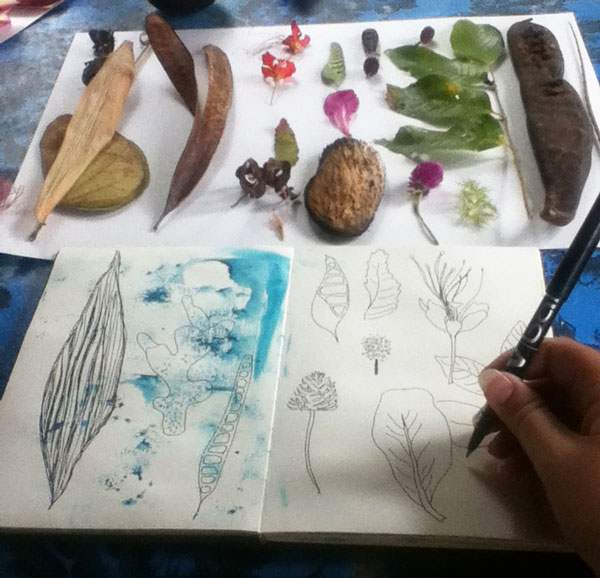
The undeniable truth is that our brains imprint and retain experiences differently when we translate them into sketches or drawings of people, places, or objects, rather than through the lens of a camera, as previously discussed in one of our blog posts. 🧠🎨
Furthermore, if you’re an urban sketching enthusiast, chances are you embellish your sketches with accompanying commentary. These notations might detail what caught your eye and inspired you to depict a particular scene over another. As a result, your travel sketchbook transforms into a personalized chronicle of your daily escapades during your vacations. 📝🌍
Last but not least, urban and travel sketching are exceptional solutions to the ever-present “I don’t know what to draw” predicament. With a captivating landscape before you and a set of art materials in hand, you’ll unearth a plethora of potential subjects for future drawings and paintings simply by immortalizing the places you visit. 🎨🌆
4. Utilizing Sketchbooks for Idea Generation in Artistic Projects
Many experienced artists leverage the practice of maintaining a daily sketchbook to nurture and cultivate ideas for their creative endeavors. For instance, if you have completed our Mastery Program, you’ll have acquired techniques for ideation in painting, some of which may involve using photographic references.
Nevertheless, the primary advantage of consistently keeping a sketchbook lies in its capacity to capture spur-of-the-moment inspirations for potential artwork. Let’s consider an example: imagine you suddenly conceive an intricate painting idea, one encompassing fantastical elements such as mythical creatures like unicorns or centaurs, or professional design elements like logos. In such instances, your sketchbook becomes your creative savior.
You can swiftly render a rough sketch of your brainchild within the pages of your sketchbook, preserving the essence of your idea. This proves invaluable for safeguarding those imaginative sparks. Later, when you’re back in your studio with more time and resources at your disposal, you can revisit these sketches. You have the option to refine the original concept, add more details, or seek out additional photographic references to aid in the meticulous development of your vision. Your sketchbook, in this sense, becomes a treasure trove of inspiration and a stepping stone for your future artistic endeavors.
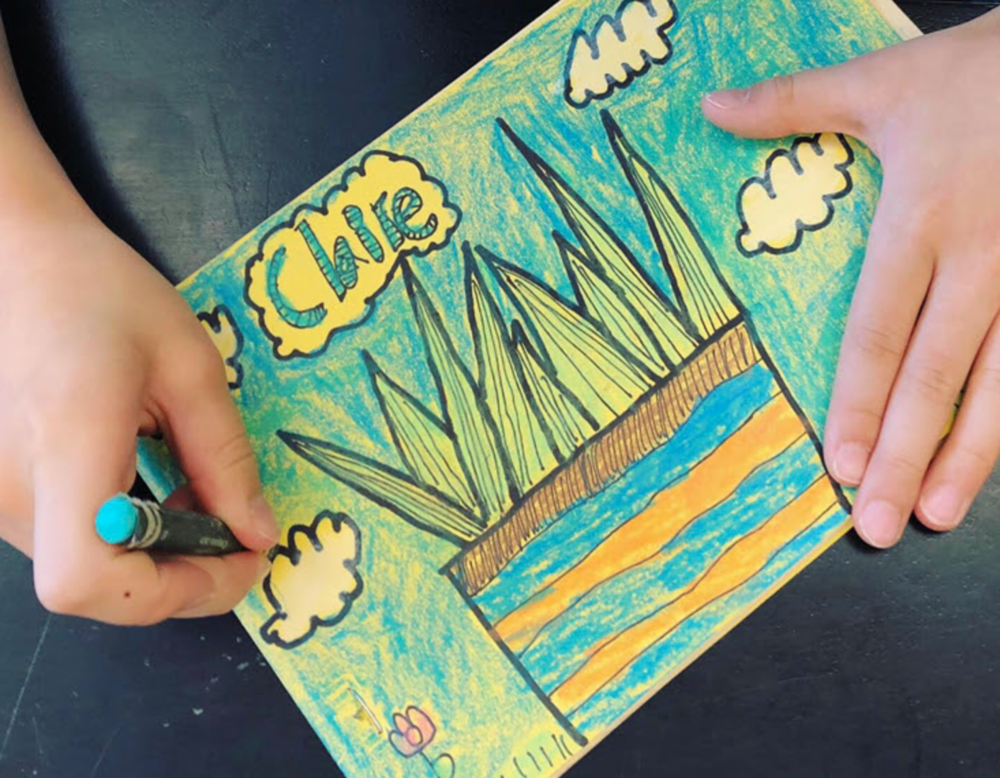
If you’ve gone through this list and concluded that maintaining a daily sketchbook is primarily for generating project ideas and skill enhancement, it’s essential to clarify that this perception is incomplete. While it’s true that consistent sketching can significantly benefit these aspects of your artistic journey, they are not the most crucial reasons for embracing a daily sketchbook routine.
Your daily sketchbook practice should also incorporate an element of playfulness. In fact, without this playfulness, you might not be approaching it in the most beneficial way.
In simpler terms, perfecting your artistic skills indeed requires dedication and practice. However, even in the most disciplined pursuit of mastery, there should be room for joy and creativity. When you find joy in your artistic expression, you immerse yourself in a creative “Zone” and tap into your right brain – the part associated with creativity and intuition.
Paradoxically, this state of creative joy is precisely what’s necessary for your growth as an artist. While structured programs like the Mastery Program offer valuable techniques for skill improvement, we understand that the act of creating purely for enjoyment, such as drawing just for fun, often yields the most significant progress in terms of artistic development. It’s a reminder that, beyond the technical aspects, art should also be a source of pleasure and inspiration, enriching your creative journey in profound ways.
5. To Play
If you’ve gathered from this list that maintaining a daily sketchbook is primarily geared toward generating ideas for work or honing your skills, it’s important to realize that this isn’t the full picture.
While it’s true that daily sketching can greatly benefit these aspects of your artistic journey, they aren’t the most essential reasons for embracing this habit.
Incorporating an element of play is crucial in your daily sketchbook practice. In fact, without this playful dimension, you might not be approaching it optimally.
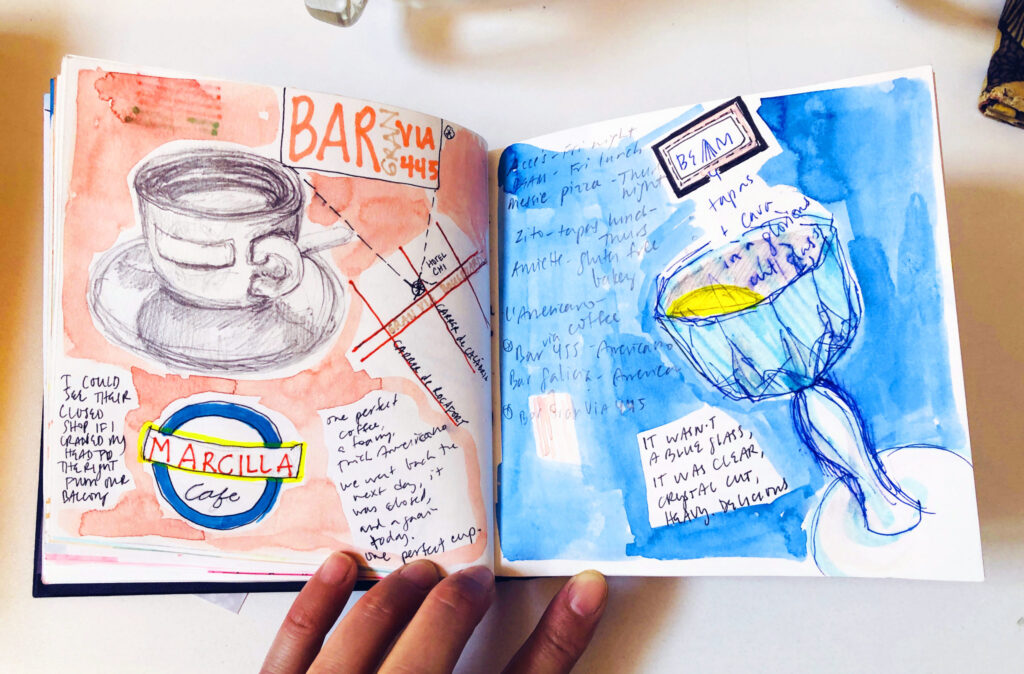
In simpler terms, perfecting your art skills does demand practice and determination, but even the most structured path to artistic mastery should make room for joy and spontaneity. When you experience genuine delight in the act of creating, you enter a state of flow, immersing yourself in what’s often referred to as the “Zone.” This is where you begin to access your right brain, associated with creativity and intuition.
Ironically, this state of playful creativity is precisely what fuels your growth as an artist. While programs like the Mastery Program can equip you with various techniques to enhance your artistic skills, it’s also important to acknowledge that engaging in fun activities, such as drawing just for the sheer joy of it, often yields the most profound results when it comes to artistic improvement. In essence, art isn’t just about mastering technique; it’s about nurturing your passion, curiosity, and the sheer joy of creation, all of which play a vital role in your artistic development.
Video caption: A video about starting a sketchbook for some inspiration!
Artists who keep a daily sketchbook habit can benefit from the following:
- Recording ideas for paintings: A sketchbook is a great place to capture fleeting ideas for paintings, before they are forgotten. It can also be used to develop and refine ideas, by experimenting with different compositions and techniques.
- Trying out new art materials: A sketchbook is a low-stakes environment to experiment with new art materials, without worrying about “ruining” a finished painting. Artists can try out different mediums, colors, and brushstrokes to see what they like best.
- Honing artistic skills: Regular sketching practice can help artists improve their observational skills, hand-eye coordination, and overall drawing and painting skills.
- Adding an element of play: Sketchbooking can be a fun and relaxing way to express creativity. Artists can use their sketchbooks to doodle, experiment, and create without any pressure to produce a finished product.
- Documenting travels and memories: Sketchbooks can be used to create a visual record of travels and experiences. Artists can sketch people, places, and things they see, along with notes and reflections. This can be a great way to reminisce about favorite memories and share them with others.
- https://youtu.be/RSLw7MNff1I?si=uYuSd9TCPm65JmAQ
If you are an artist, I encourage you to start keeping a daily sketchbook. It is a great way to improve your skills, explore your creativity, and document your life.

